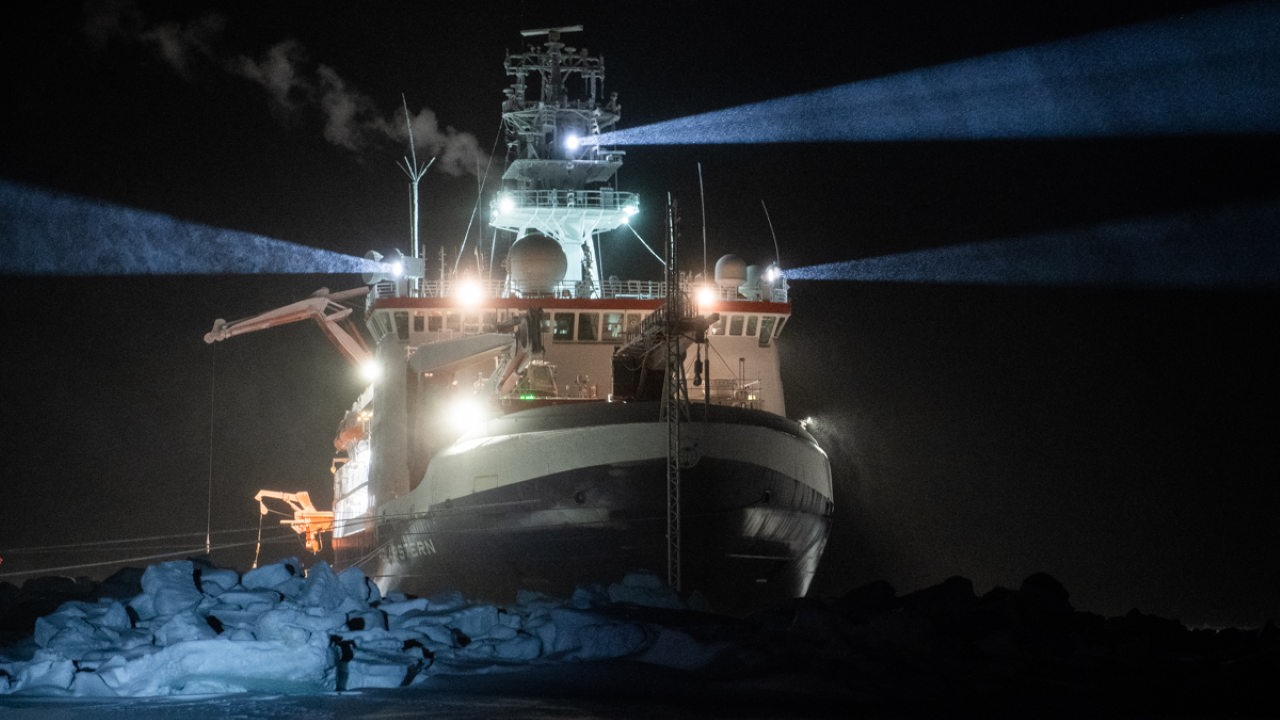
Explore the sea on site
Research vessels
A good 70 per cent of the Earth's surface is covered by oceans. That's more than 350 million km² on the surface and a massive 1.3 billion km3 in volume. They play a crucial role in the climate system, are sources of new raw materials, home to a wide variety of creatures and increasingly a site for human activity. To explore the oceans on the ground, research vessels are indispensable.
Marine researchers are tracking down the processes in the oceans with sophisticated technologies: remote-controlled underwater vehicles, mobile seabed drilling equipment or systems anchored on the bottom for long-term recording of chemical and physical data. They are also deployed from research vessels. A modern and efficient research fleet is therefore important to meet the diverse tasks of marine research. See for yourself the diversity of the German research fleet and learn more about the seas on which the ships are deployed.
MISSION CARD - LIVE
This function requires consent to "External Media" in the Consent Dialogue.
Adjust consent
Overview of RESEARCH VESSELS
ALKOR
Year of manufacture: 1990
Operator: GEOMAR
Width: 12.5 m
Length: 55.2 m
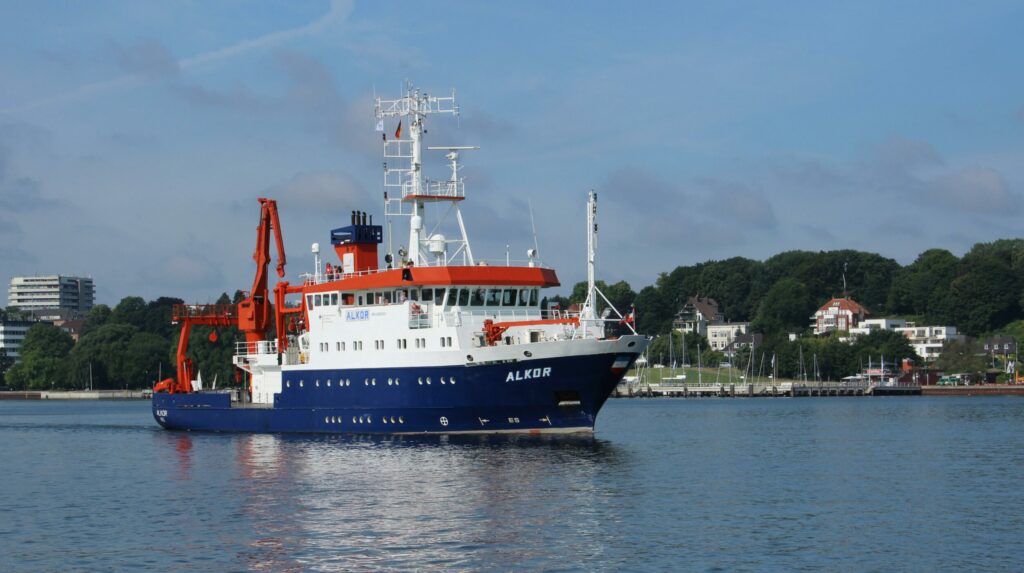
The 55-metre-long vehicle has four laboratories where, among other things, air, water and sediment samples can be examined. JAGO, the only manned German submersible, is also occasionally deployed on the ALKOR, for example to study cold-water corals in the Skagerrak. The ALKOR, named after a star in the image of the Great Bears, was built as the successor to a research cutter of the same name.
ATAIR
Year of manufacture: 2020
Operator: BSH
Width: 16.80 m
Length: 75 m
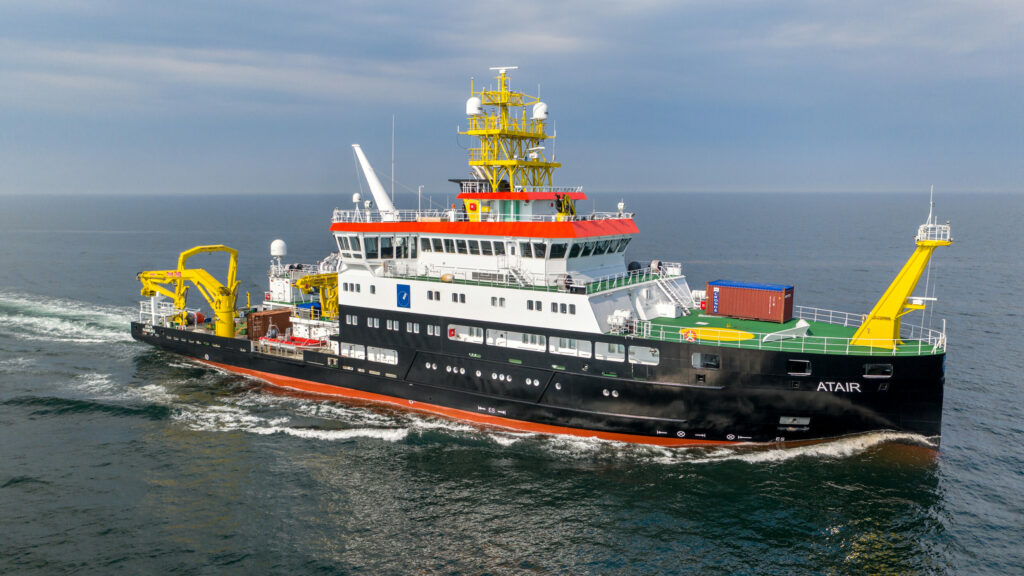
The new ATAIR is the world's first seagoing authority vessel for special tasks with a propulsion system for low-emission liquefied natural gas (LNG) and thus meets the highest environmental requirements. The tasks of the new ATAIR include sea surveying and wreck search. In addition, it will carry out marine survey missions such as the annual summer survey, for which the BSH previously chartered a research vessel each year. The ATAIR is underway in the North Sea and Baltic Sea as well as in the North-East Atlantic.
CLUPEA
Year of manufacture: 2012
Operator: Thünen Institute
Width: 7.88 m
Length: 28.8 m
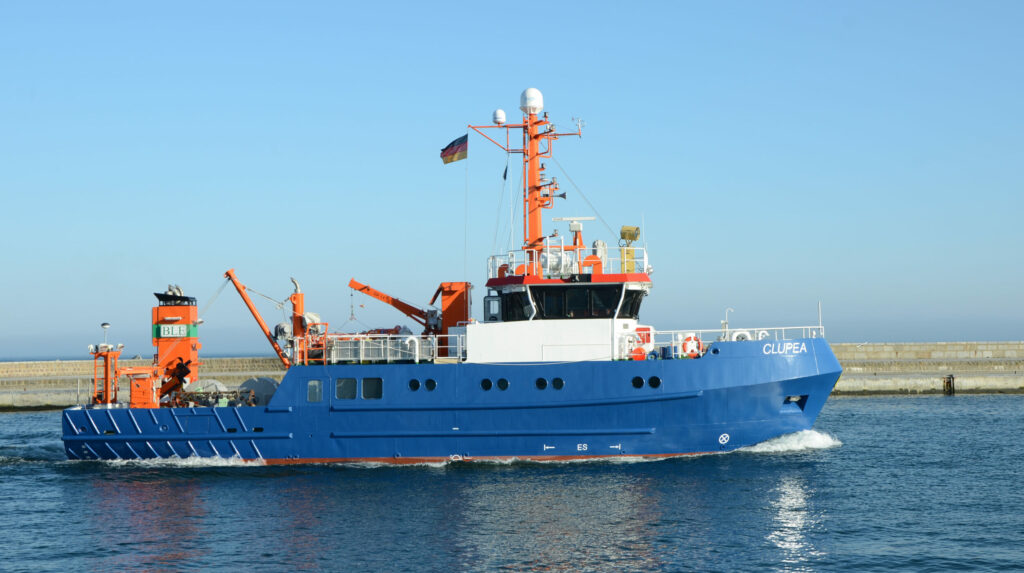
The CLUPEA works mainly in the coastal fisheries areas of the south-western Baltic Sea, but can also be deployed in the North Sea. Floating and bottom trawls, bottom-set nets and longlines, fishery biological and plankton nets as well as oceanographic probes are used. The name CLUPEA comes from the scientific name of the herring. Clupea harengus has been traded in large quantities in Europe since the Middle Ages and is still an important "bread fish" of the German coastal fishery.
DENEB
Year of manufacture: 1994
Operator: BSH
Width: 11.40 m
Length: 51.92 m
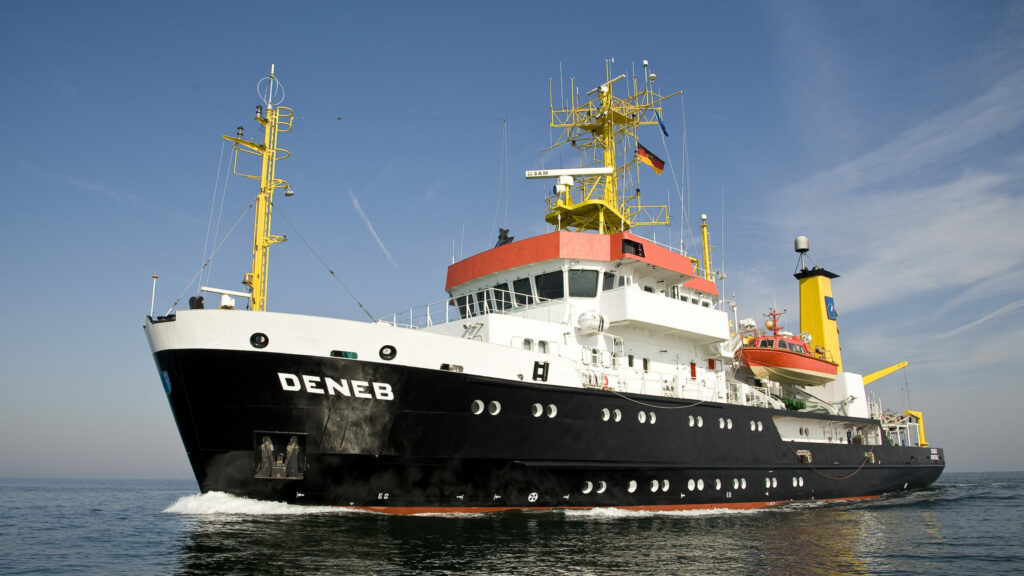
The DENEB is a sister ship to the WEGA, built in 1990. Its tasks are sea surveying and wreck search, mainly sounding out the German coastal waters in the North Sea and Baltic Sea in order to provide precise and up-to-date data for the BSH's nautical charts, recreational craft charts and other nautical publications. If required, also nautical surveys in international coastal waters, marine and nautical-technical investigations.
ELISABETH MANN BORGESE
Year of manufacture: 1987
Operator: IOW
Width: 10.8 m
Length: 56.56 m
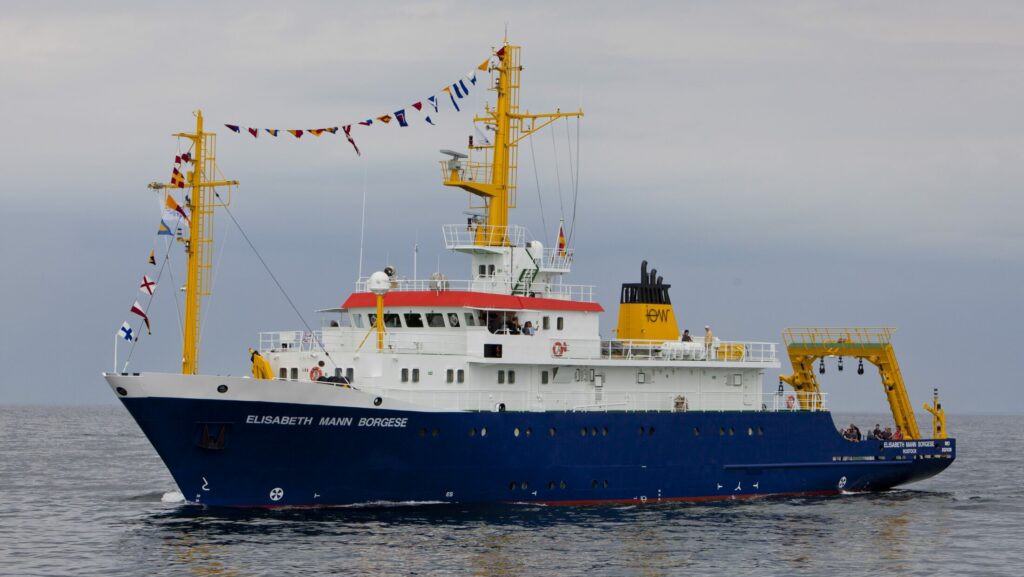
The "Elisabeth Mann Borgese" replaces the "Professor Albrecht Penck", which was taken out of scientific service in August 2010. Her area of operation is primarily the Baltic Sea. The "Schwedeneck", previously used by the Navy's Defence Technology Service, is now equipped and available for civilian research. The ship has a total of 97 m² of laboratory space and a functional, large working deck. It can accommodate twelve scientists and a crew of eleven.
HEINCKE
Year of manufacture: 1990
Operator: Alfred Wegener Institute
Width: 12.5 m
Length: 54.2 m
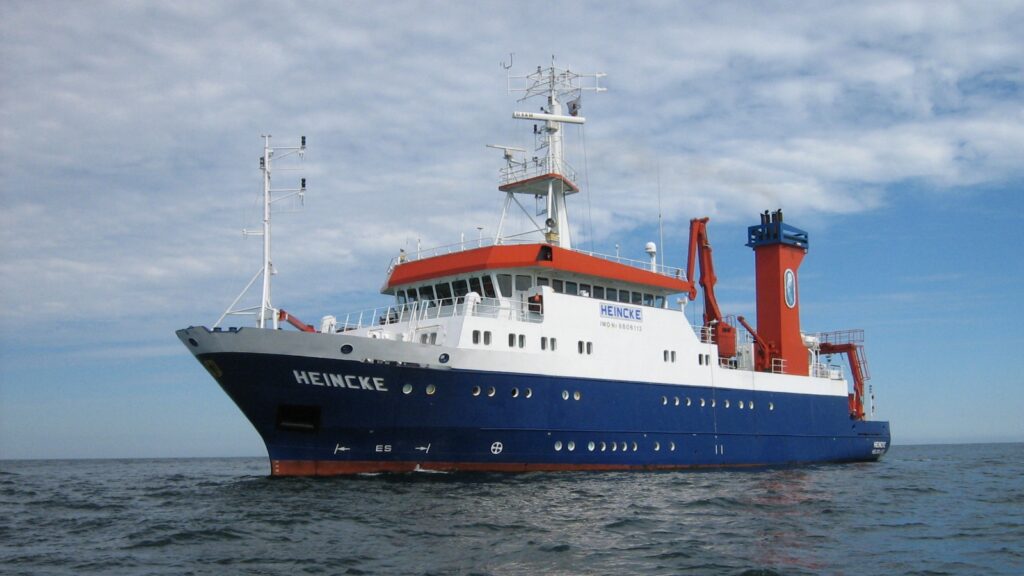
The research vessel HEINCKE was designed for longer research trips. It can stay at sea for up to 30 days on its expeditions in the North Sea and Baltic Sea without having to call at a port. The almost 55-metre-long Heincke is the second largest ship in the AWI fleet. The ship is at sea a good 250 days a year and offers up to twelve scientists a place to live and work. FS Heincke's operational areas are the North Sea and the North Atlantic. In the summer months, the research vessel even sails as far as the Norwegian archipelago of Spitsbergen.
LITTORINA
Year of manufacture: 1975
Operator: GEOMAR
Width: 7.4 m
Length: 29.8 m
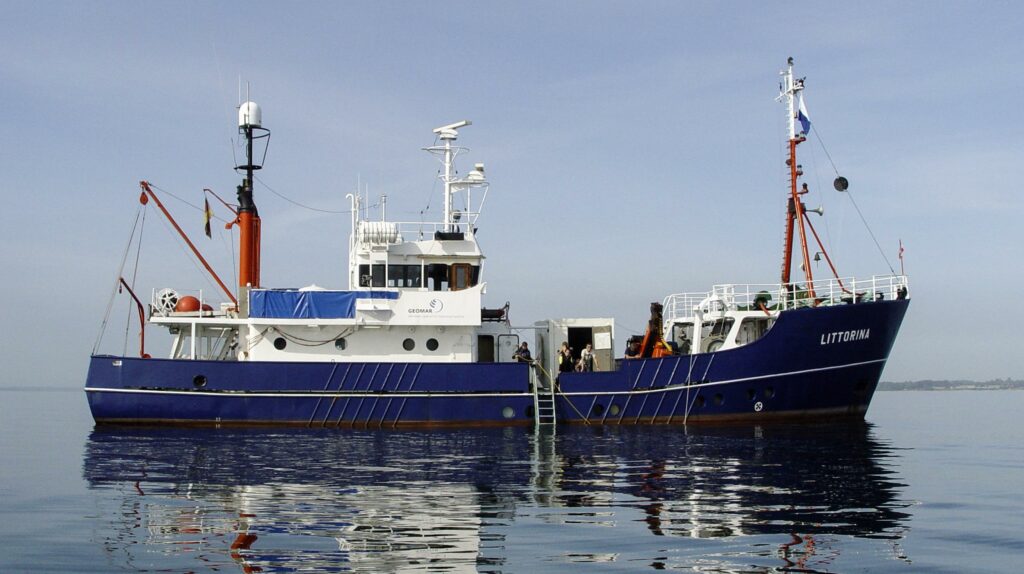
The LITTORINA, which translates as periwinkle, mainly sails the Baltic and North Seas, but can also be deployed in the English Channel and on the Norwegian coast. And by no means at a snail's pace. The ship reaches a maximum speed of 10 knots, the equivalent of 18 kilometres per hour. On voyages lasting several days, the LITTORINA can accommodate 6 scientists; on day voyages, a maximum of a dozen scientists can take part. The technical equipment allows the researchers to take water and sediment samples from depths of up to 500 metres.
LUDWIG PRANDTL
Year of manufacture: 1983
Operator: Hereon
Width: 6.25 m
Length: 31 m
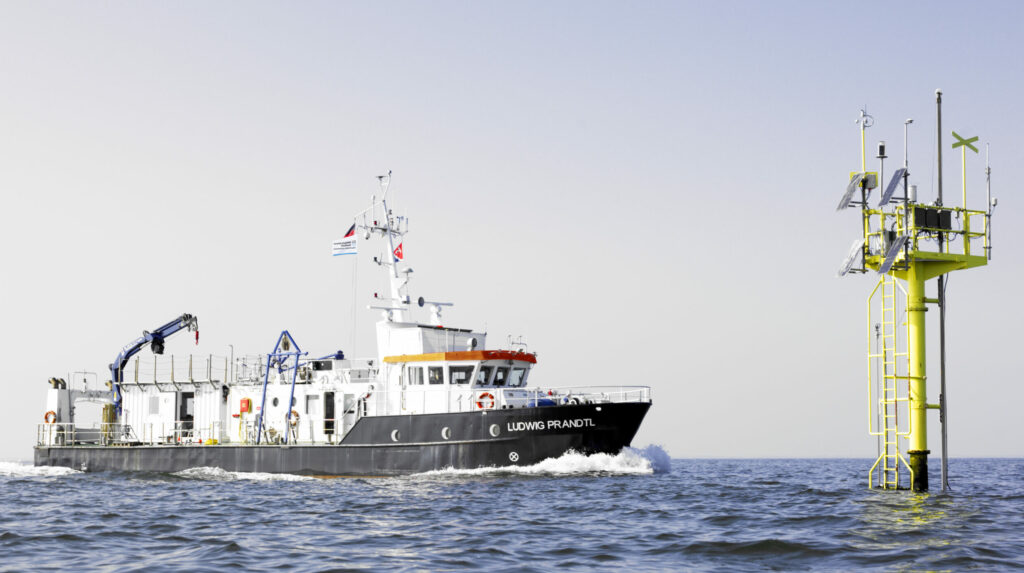
Due to its shallow draft of maximum 1.70 metres, it can be used not only in the North Sea and Baltic Sea, but also in the Wadden Sea and in estuaries. This makes her the ideal platform for researchers to conduct various studies of the coastal region. In 2002, the LUDWIG PRANDTL was enlarged and equipped with state-of-the-art technology. On board is a laboratory where the samples can be further processed. In addition to a hydraulic folding crane and a winch, the scientists have a wide variety of measuring instruments at their disposal.
MARIA S. MERIAN
Year of manufacture: 2006
Operator: German Research Vessel Control Centre
Width: 19.2 m
Length: 94.8 m
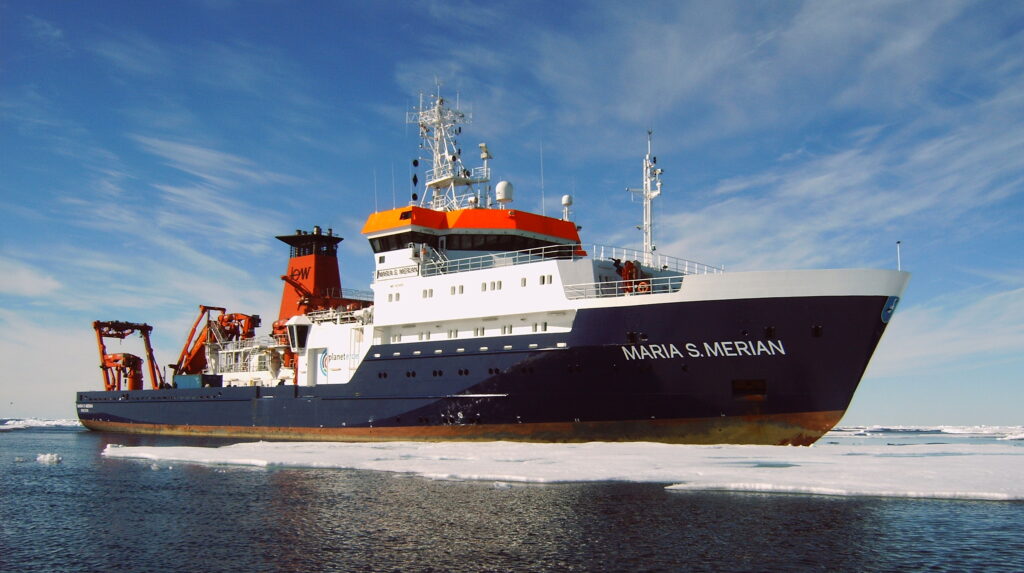
The MARIA S. MERIAN is also equipped for research work on the ice edge of the North Atlantic - she can break ice up to 60 cm thick and move between floating ice floes. In order to manoeuvre the MERIAN with precision, it has been equipped with a special propulsion system. Under the hull are two propellers that can rotate 360°. This allows the ship to precisely maintain a given position at sea.
METEOR
Year of manufacture: 1986
Operator: German Research Vessel Control Centre
Width: 16.5 m
Length: 97.5 m
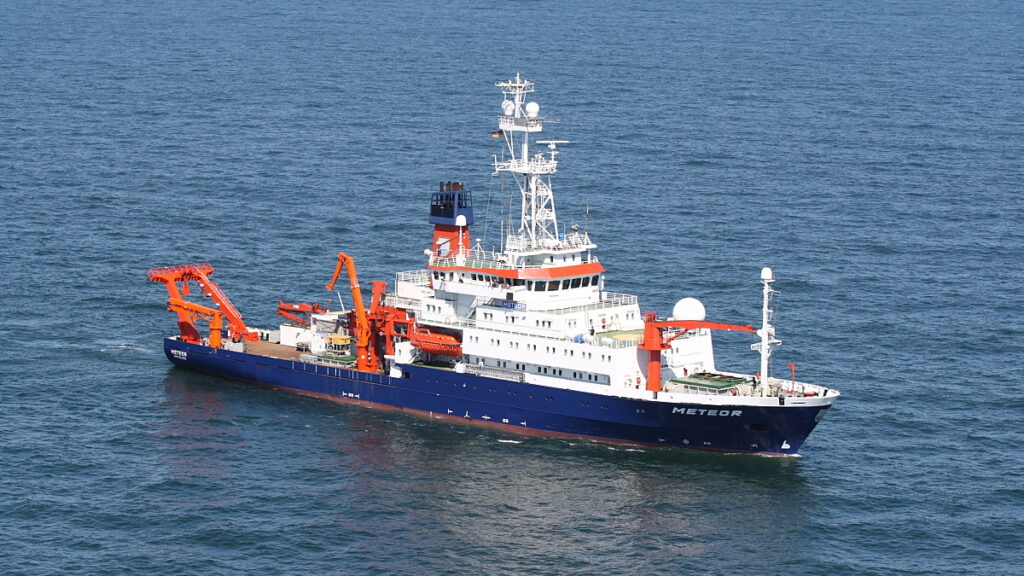
The research vessel METEOR is primarily used for basic marine research. Scientists from different disciplines work closely together on expeditions. Cooperation with international research groups also plays an important role in everyday life on board. The METEOR can operate at sea for up to 50 days without having to call at a port in between. Enough time for the 28 scientists on board to use the 20 well-equipped laboratories. Sufficient space on deck as well as 17 winches and cranes enable the research groups to upgrade the ship according to their ideas. For example, they can set up additional laboratory containers or use manned and unmanned submersibles.
MYA II
Year of manufacture: 2013
Operator: Alfred Wegener Institute
Width: 6.26 m
Length: 21.7 m
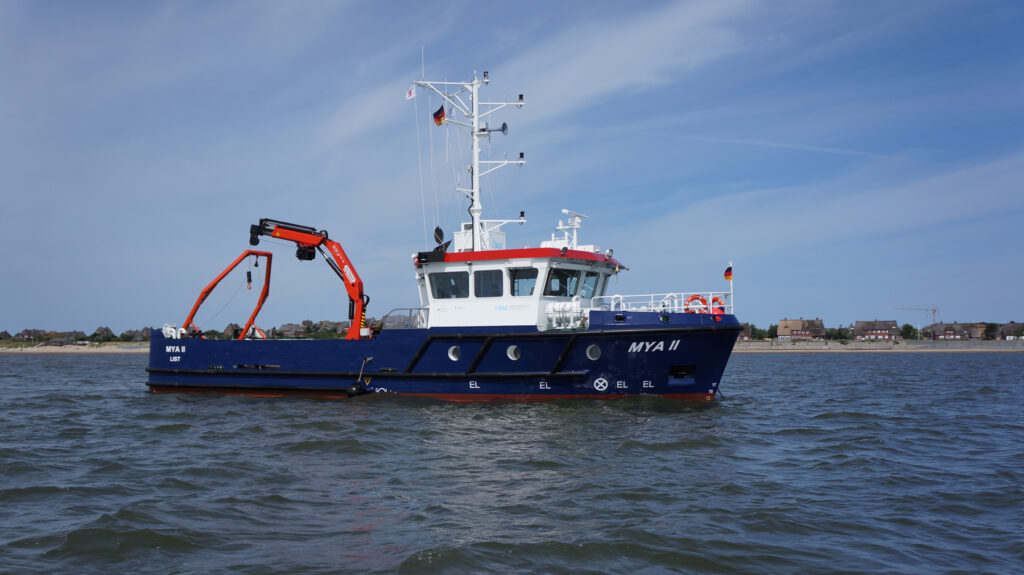
Up to twelve scientists conduct research on board Mya II. With the help of the ship's modern equipment, researchers observe, for example, material flows between the different levels of the food web. Geologists use various measurement data to calculate, among other things, where which sediments are deposited, what the structure of the seabed is like and for which organisms it is suitable as a habitat. Mya II is also a training ship for young scientists - they learn how to use modern oceanographic equipment on board Mya II.
POLARFUCHS
Year of manufacture: 1982
Operator: GEOMAR
Width: 4.4 m
Length: 12.7 m
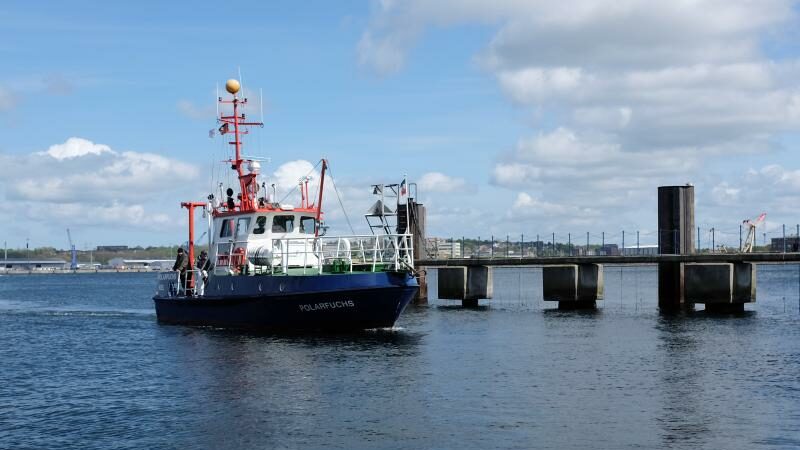
The research boat POLARFUCHS originally served as a laboratory tender for the research icebreaker POLARSTERN. After some conversion work, the research boat was handed over to the then IFM-GEOMAR for operation in 1997. There it is used on the Schleswig-Holstein coast, especially for ecological studies. For this purpose, the POLARFUCHS is equipped with a multi-purpose laboratory and a small 4-drum winch. In addition to research, the boat is also used for teaching in practical courses and collecting data for theses.
POLARSTERN
Year of manufacture: 1982
Operator: Alfred Wegener Institute
Width: 25 m
Length: 118 m
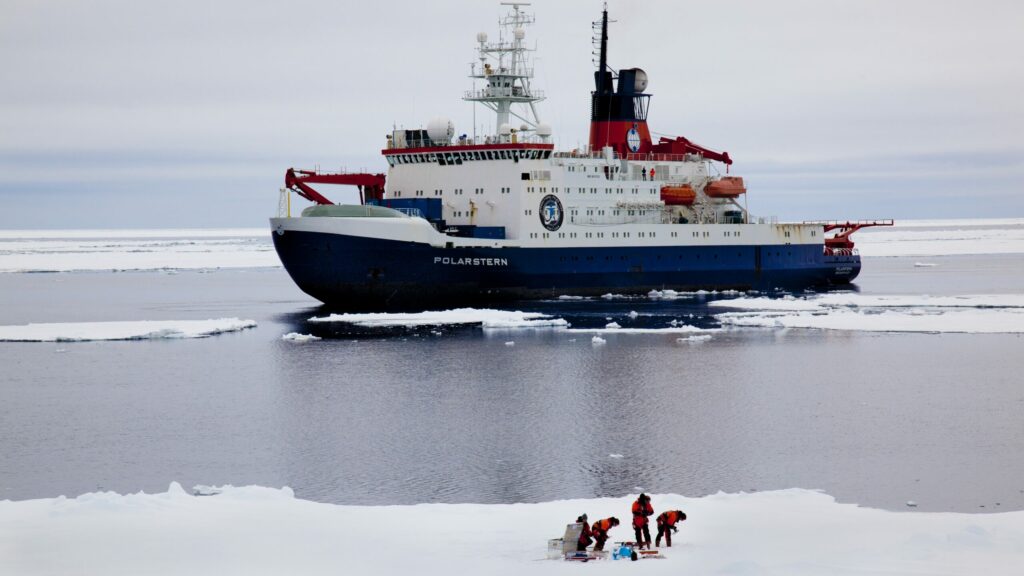
The POLARSTERN is considered one of the most efficient research icebreakers in the world. Since her maiden voyage in 1982, she has undertaken numerous expeditions to the polar seas. As a double-walled icebreaker, it can operate at temperatures as low as -50° C. Thanks to its 20,000 hp engine, the ship is capable of carrying out a large number of research expeditions. Thanks to 20,000 hp of engine power, the ship can pass through ice floes one and a half metres thick at a speed of 5 knots - thicker ice has to be broken by ramming.
SENCKENBERG
Year of manufacture: 1976
Operator: Senckenberg Society
Width: 7.6 m
Length: 29.5 m
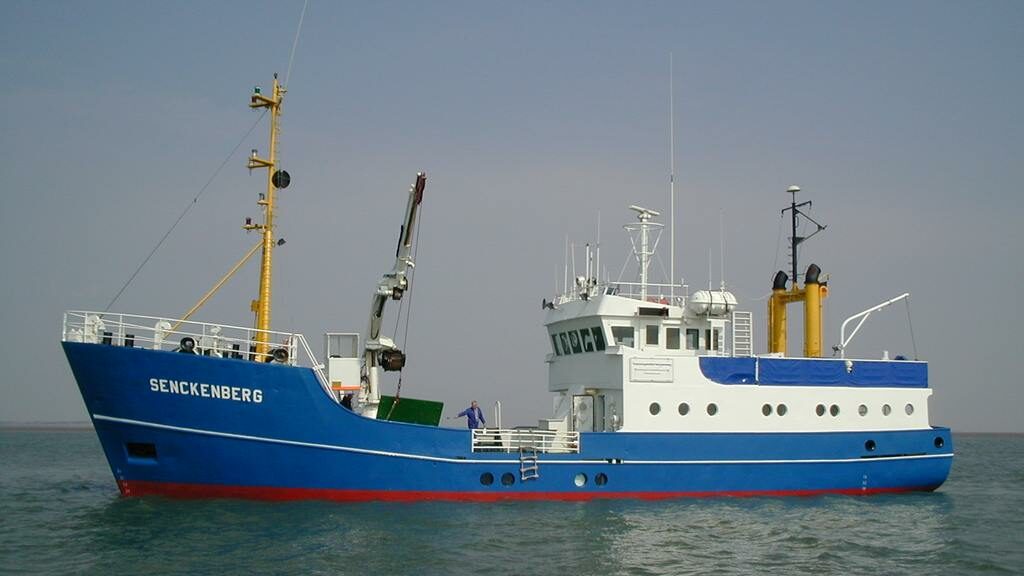
The Senckenberg is a German research cutter belonging to the Senckenberg Gesellschaft für Naturforschung in Frankfurt am Main. The cutter is stationed in Wilhelmshaven at the Department of Marine Research, a branch of the Senckenberg Research Institute.
SOLEA
Year of manufacture: 2004
Operator: Thünen Institute
Width: 10 m
Length: 42.7 m
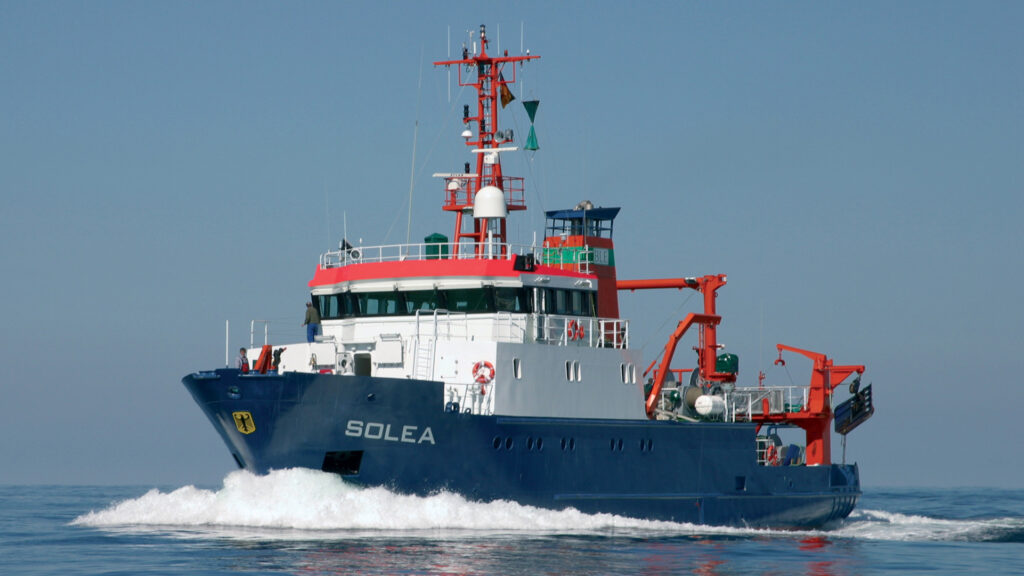
The medium-sized "Solea" is used in the sea areas of small-scale deep-sea fishing (Baltic Sea, North Sea). On the research cruises we use floating and bottom trawls, beam trawls, fishery biological and plankton nets as well as oceanographic probes. During the construction of the "Solea", care was taken to reduce underwater noise emissions as much as possible. It is the quietest vessel in its class and therefore particularly suitable for the acoustic recording of small schooling fish in the North and Baltic Seas.
SONNE
Year of manufacture: 2014
Operator: German Research Vessel Control Centre
Width: 20.6 m
Length: 116 m
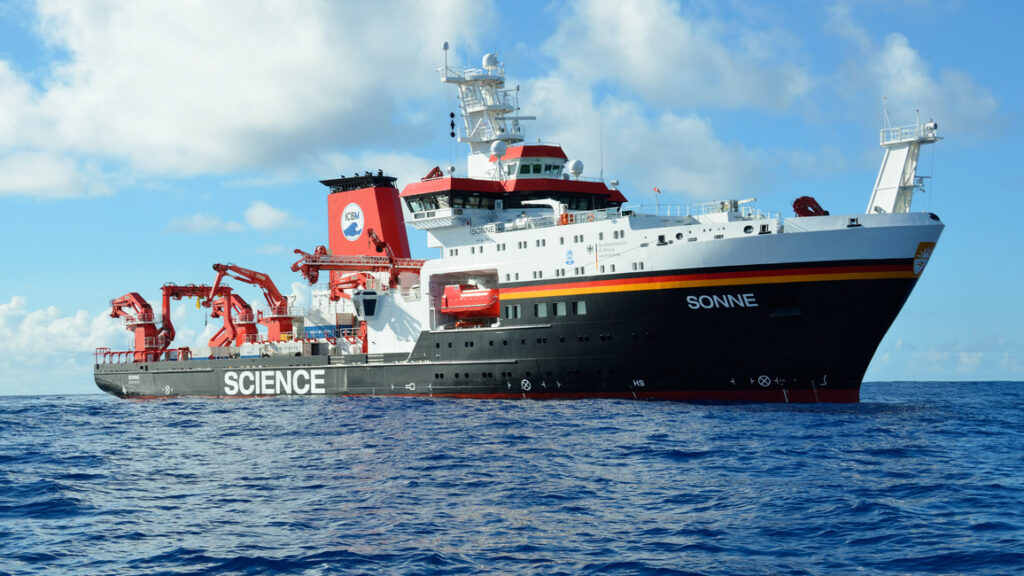
With a length of 116 metres and a width of just under 21 metres, the SONNE can accommodate up to 40 scientists and a crew of 35. The main areas of operation of the new research vessel are the Indian and Pacific Oceans. In addition to marine raw materials and the effects of human activities on nature, the scientific and socially relevant questions that the "Sun" will help to answer include the role of the sea areas in global material cycles and climate development.
UTHÖRN II
Year of construction: 2023
Operator: Alfred Wegener Institute
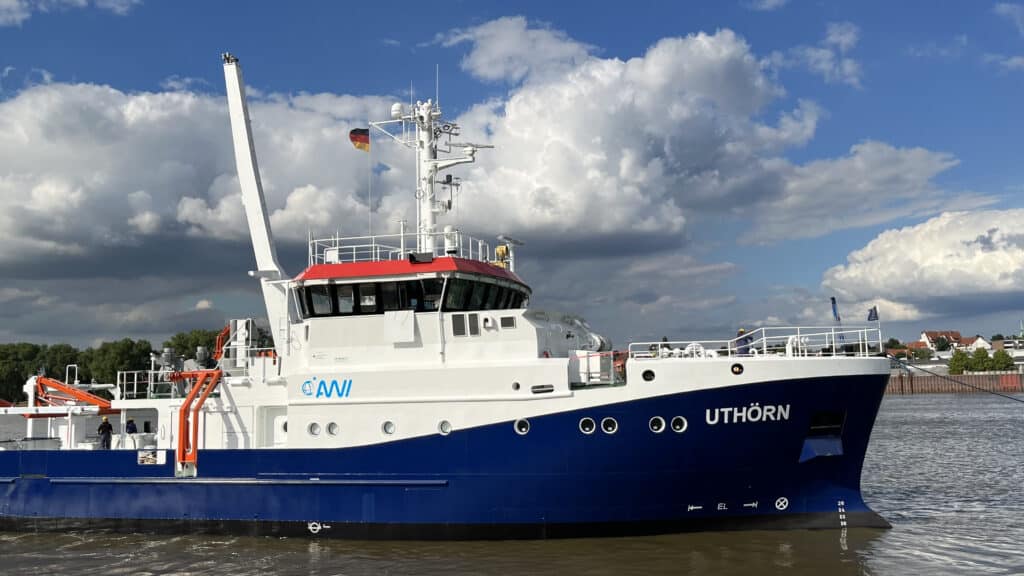
On the Uthörn, researchers sail across the North Sea all year round and investigate how the sea is changing. They record the physical, chemical and biological state and provide valuable long-term data for the sustainable management of this unique natural environment. Many marine biologists learn their scientific trade on the training ship. The Uthörn is electrically powered and the energy is supplied by two specially developed combustion engines that run on methanol instead of marine diesel. Unlike the combustion of petrol, diesel or heavy fuel oil, no soot particles are released into the air when methanol is burned.
WALTHER HERWIG III
Year of manufacture: 1993
Operator: Thünen Institute
Width: 15.22 m
Length: 64.50 m
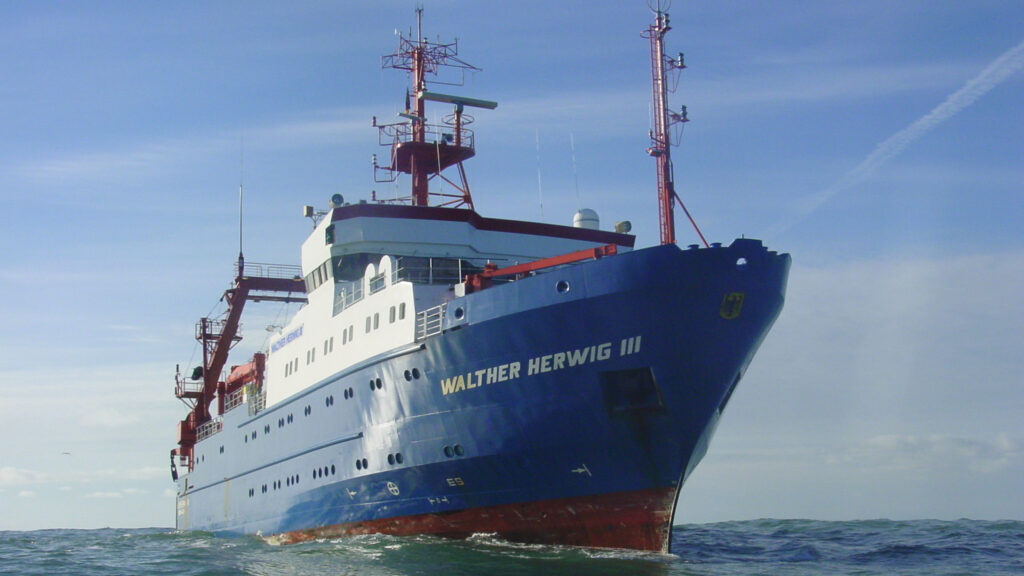
The ship is named after Walther Herwig (1838-1912), the "father" of German deep-sea fishing and co-initiator of European, internationally coordinated fisheries research. With a length of almost 65 m, the WALTHER HERWIG III is the largest of the three German fisheries research vessels. The stern trawler with towing gear is used in the sea areas of large-scale deep-sea fishing (North Sea, Baltic Sea and North Atlantic), the research voyages usually extend over 2 to 7 weeks. Floating and bottom trawls as well as plankton nets and other fishing gear can be used.
WEGA
Year of manufacture: 1990
Operator: BSH
Width: 11.40 m
Length: 52.06 m
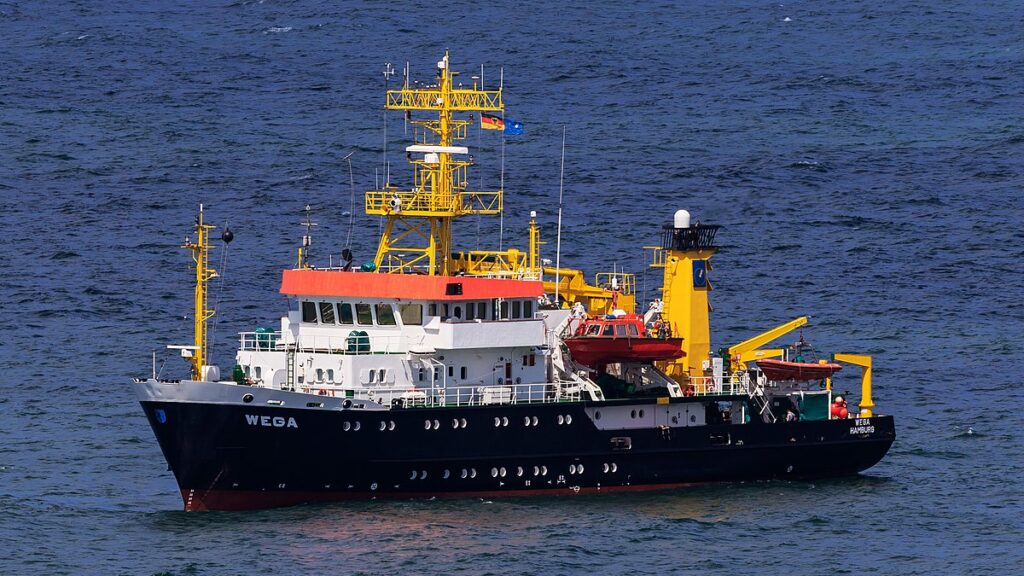
The WEGA is a sister ship to the ATAIR, which was commissioned in 1987. Its tasks are marine surveys and wreck searches, mainly sounding the German coastal waters in the North and Baltic Seas in order to provide precise and up-to-date data for the BSH's nautical charts, recreational craft charts and other nautical publications. If required, also marine surveys in international coastal waters, oceanographic and nautical-technical investigations.
Coordination of the Ships
Various organisations are involved in the operation of the German research vessels. The "Portal German Research Vessels" is the central point of contact for requesting ship time for the larger and medium-sized research vessels. The respective ship operators are then responsible for scheduling. Deployment planning for the smaller research vessels is carried out directly by their home institutions.
The German Research Vessels Portal is the central point of contact for submitting cruise proposals for the research vessels POLARSTERN, SONNE, METEOR, MARIA S. MERIAN, ALKOR, HEINCKE and ELISABETH MANN BORGESE.
The allocation of ship time for the German research vessels POLARSTERN, SONNE, METEOR, MARIA S. MERIAN, ALKOR, HEINCKE and ELISABETH MANN BORGESE is based on scientific cruise proposals, which are evaluated by the Expert Panel on Research Vessels (GPF) appointed by the German Research Foundation (DFG) and the Federal Ministry of Education and Research (BMBF). Voyage proposals that have been positively assessed can be recommended by the respective ship operators for use in voyage planning.
The CEN - Centre for Earth System Research and Sustainability at the University of Hamburg is home to the German Research Vessel Command Centre (LDF), which operates the global research vessels SONNE, METEOR and MARIA S. MERIAN
In addition to operational and voyage planning, the LDF is responsible for the scientific, technical, logistical and financial preparation, management and support of the operation of the ships entrusted to it. In doing so, the LDF works in partnership with the respective cruise managers of various research institutions and is also a partner of the contract shipping company, with whom the continuous modernisation of the ships is also planned and implemented.
The Alfred Wegener Institute Helmholtz Centre for Polar and Marine Research (AWI) operates the research icebreaker POLARSTERN and the research vessels HEINCKE, UTHÖRN and MYA II.
The GEOMAR Helmholtz Centre for Ocean Research Kiel operates the research vessels ALKOR, LITTORINA and POLARFUCHS.
The Leibniz Institute for Baltic Sea Research Warnemünde (IOW) operates the research vessel ELISABETH MANN BORGESE.
The Senckenberg Research Institute by the Sea in Wilhelmshaven operates the research vessel SENCKENBERG.
The Helmholtz Centre Hereon in Geesthacht operates the research vessel LUDWIG PRANDL.
The Thünen Institute operates three fisheries research vessels on behalf of the Federal Ministry of Food and Agriculture (BMEL).
The Federal Maritime and Hydrographic Agency (BSH) operates five survey, wreck search and research vessels on behalf of the Federal Ministry of Transport and Digital Infrastructure (BMVI)



















